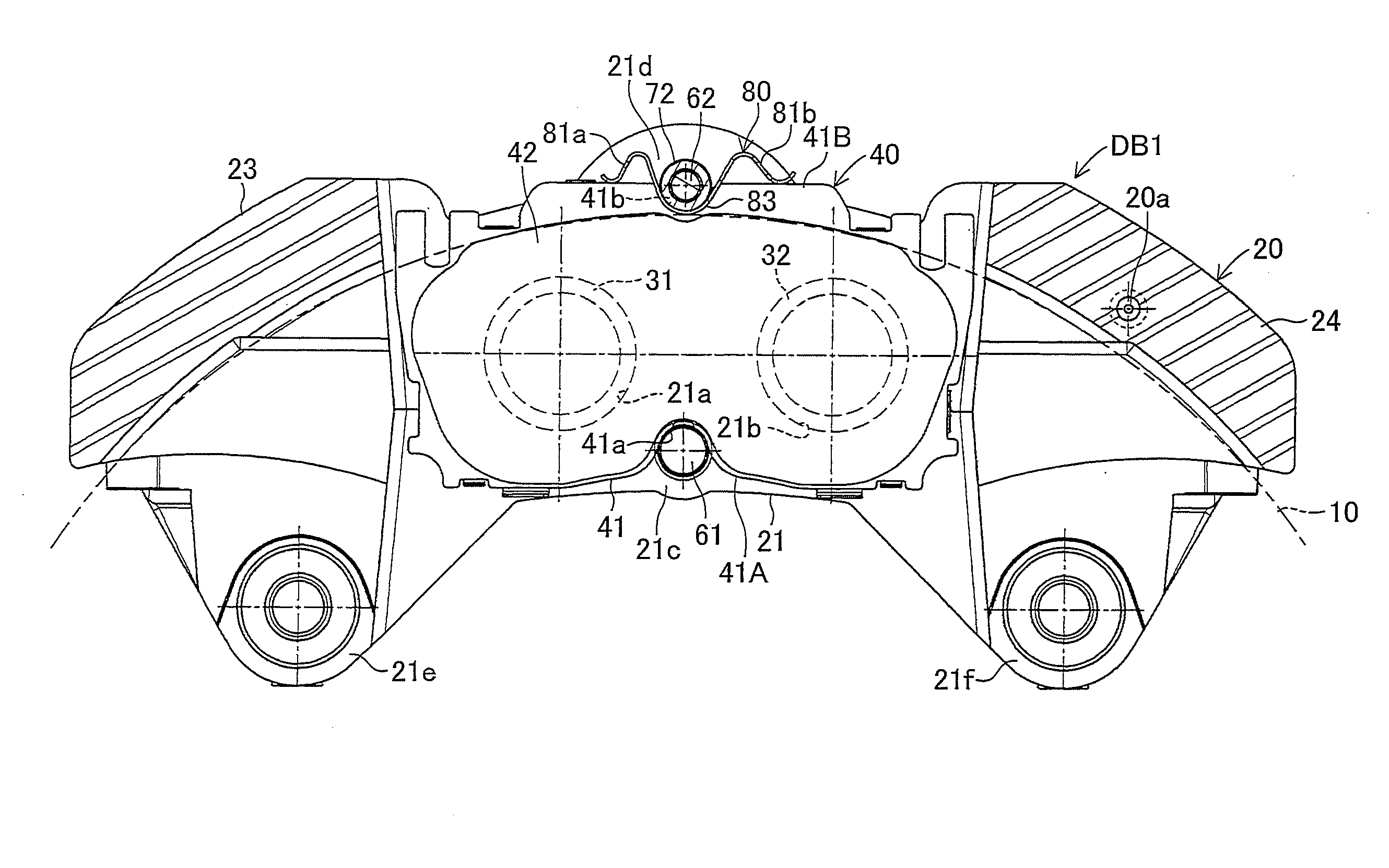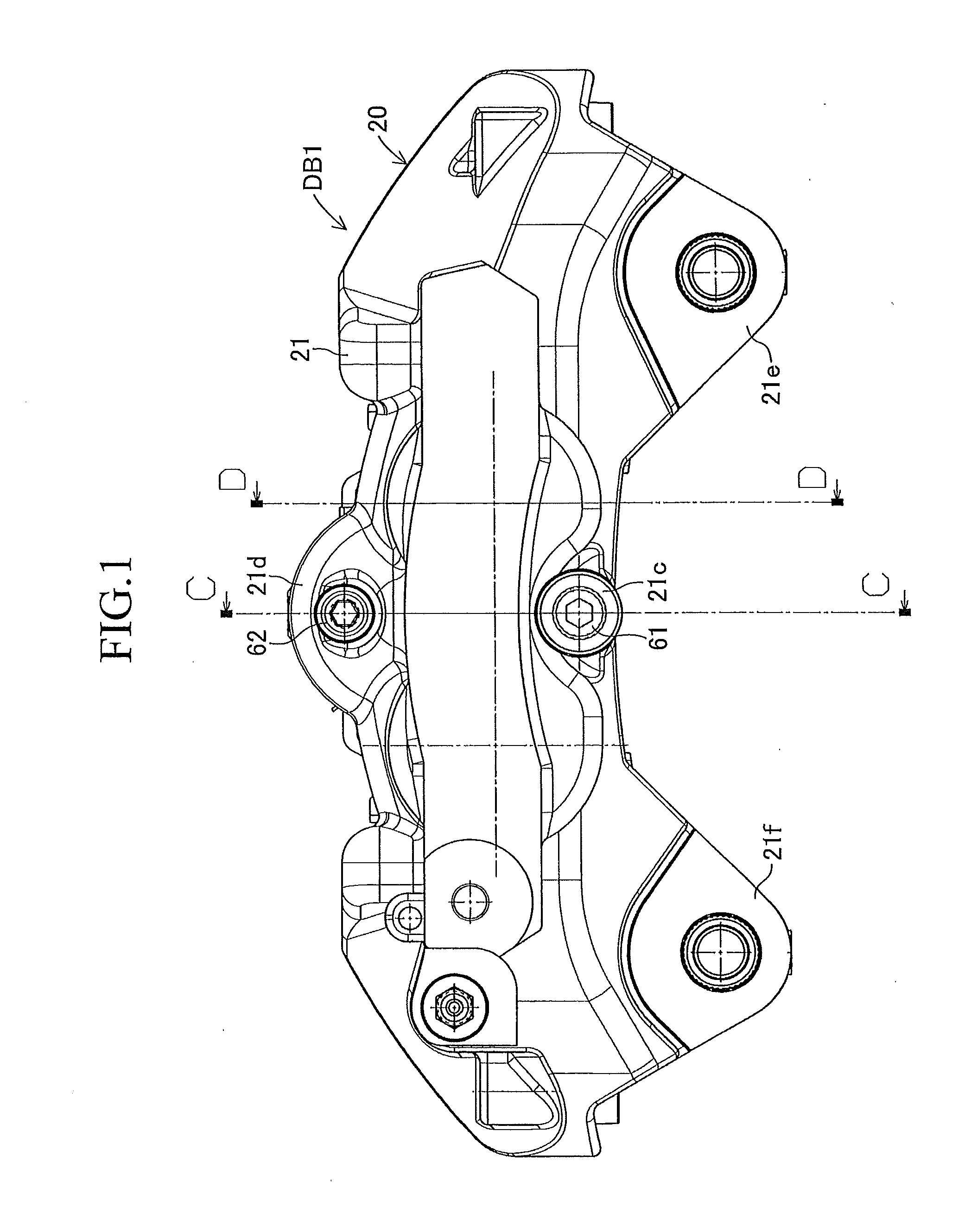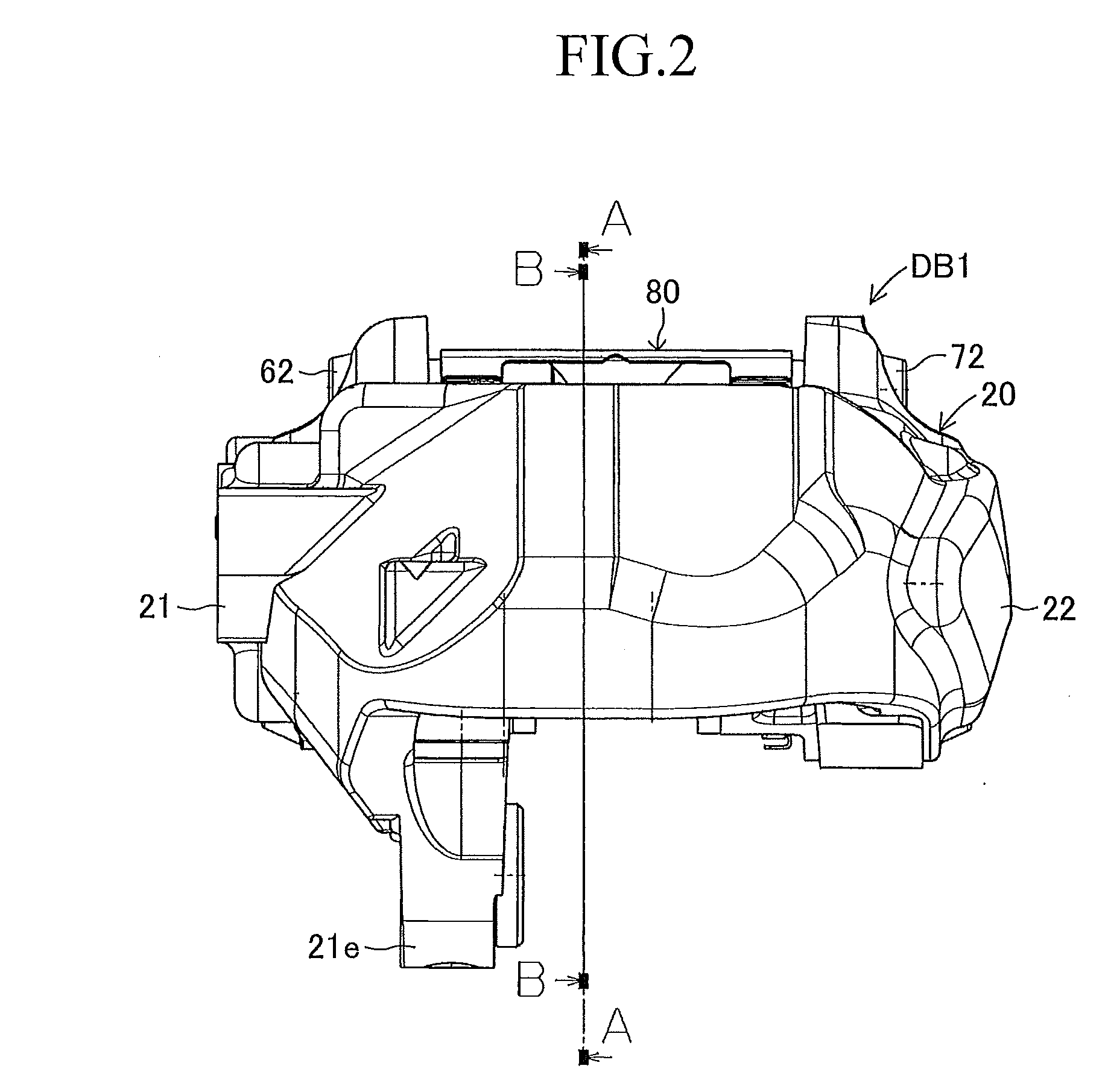Disc brake apparatus
a disc brake and disc technology, applied in the direction of axially engaging brakes, actuators, braking elements, etc., can solve the problems of inability to easily engage with the end surface, unstable behavior so as to reduce the roll moment of the brake pad, reduce processing costs, and suppress the generation of brake noise
- Summary
- Abstract
- Description
- Claims
- Application Information
AI Technical Summary
Benefits of technology
Problems solved by technology
Method used
Image
Examples
first embodiment
[0024]FIGS. 1 to 6 show a first embodiment in which a disc brake apparatus of the present invention is utilized as an opposed piston type (fixed type) disc brake apparatus for a vehicle. A disc brake apparatus DB1 according to the first embodiment is provided with a disc rotor 10 connected to an axle hub (a rotating member not shown in the figures) and rotated integrally with a wheel (not shown), a caliper 20 arranged so as to be astride a part of an outer peripheral portion of this disc rotor 10, four pistons 31, 32, 33, 34 connected to this caliper 20, an inner-side brake pad 40, and an outer-side brake pad 50. The disc brake apparatus DB1 is also provided with, in the caliper 20, an inner-side inner periphery support shaft 61, an inner-side outer periphery support shaft 62, an outer-side inner periphery support shaft 71, an outer-side outer periphery support shaft 72, and a plate spring 80.
[0025]As shown in FIG. 5, the disc rotor 10 has circular brake surfaces 10a, 10b to be grip...
second embodiment
[0046]FIGS. 7 to 10 show a second embodiment in which a disc brake apparatus of the present invention is utilized as an opposed piston type (fixed type) disc brake apparatus for a vehicle. A disc brake apparatus DB2 according to the second embodiment is provided with a disc rotor 110 connected to an axle hub (a rotating member not shown in the figures) and rotated integrally with a wheel (not shown), a caliper 120 arranged so as to be astride a part of an outer peripheral portion of this disc rotor 110, four pistons 131, 132, 133, 134 connected to this caliper 120, an inner-side brake pad 140, and an outer-side brake pad 150. The disc brake apparatus DB2 is also provided with an inner-side inner periphery support shaft 161, a pair of inner-side outer periphery support shafts 162, 162, an outer-side inner periphery support shaft 171, a pair of outer-side outer periphery support shafts 172, 172, and a plate spring 180.
[0047]According to the second embodiment, a pair of the inner-side ...
second embodiments
Modification of First and Second Embodiments
[0051]According to the first and second embodiments described above, the plate spring (80, 180) biases the inner-side brake pad (40, 140) and the outer-side brake pad (50, 150) inward in the rotor radial direction so that the leading parts of the brake pads are on the outer side of the trailing parts of the brake pads in the rotor radial direction. However, the type of the bias member is not limited to the plate spring but the bias member may be properly modified to a rod spring, for example.
[0052]According to the embodiments described above, the inner-side outer periphery support shaft (62, 162) and the outer-side outer periphery support shaft (72, 172) are integrally coupled to each other by screwing. However, these shafts may be separately provided.
[0053]According to the embodiments described above, the caliper 20, 120 is provided with the inner housing portion 21, 121 and the outer housing portion 22, 122 facing each other across part ...
PUM
 Login to View More
Login to View More Abstract
Description
Claims
Application Information
 Login to View More
Login to View More - R&D
- Intellectual Property
- Life Sciences
- Materials
- Tech Scout
- Unparalleled Data Quality
- Higher Quality Content
- 60% Fewer Hallucinations
Browse by: Latest US Patents, China's latest patents, Technical Efficacy Thesaurus, Application Domain, Technology Topic, Popular Technical Reports.
© 2025 PatSnap. All rights reserved.Legal|Privacy policy|Modern Slavery Act Transparency Statement|Sitemap|About US| Contact US: help@patsnap.com



